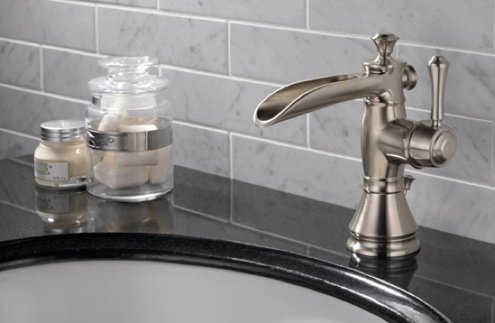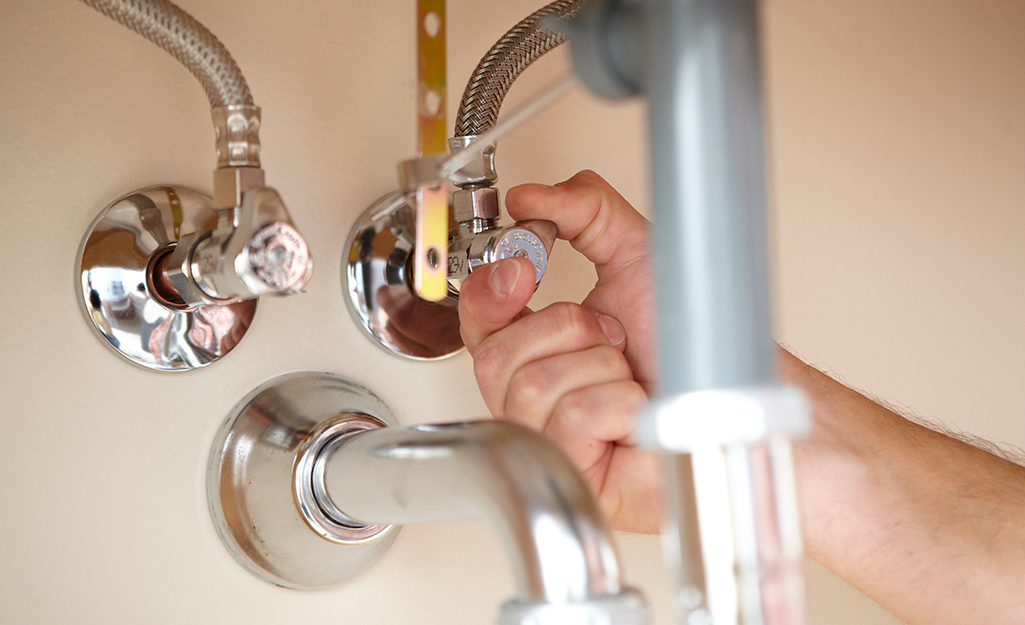How It's Critical to Rectify a Faulty Faucet
How It's Critical to Rectify a Faulty Faucet
Blog Article
Have you been in search of tips involving Why Are My Faucets Dripping (And Can I Fix It Myself)??

Leaking faucets may appear like a minor inconvenience, but their effect surpasses just the aggravation of the sound. From drainage to incurring unnecessary financial prices and health dangers, neglecting a dripping tap can bring about different repercussions. In this article, we'll look into why it's crucial to address this usual family problem quickly and effectively.
Wastefulness of Water
Environmental Impact
Dripping taps add dramatically to water wastefulness. According to the Epa (EPA), a solitary faucet leaking at one drip per secondly can waste more than 3,000 gallons of water each year. This not just stress water resources however also influences environments and wildlife depending on them.
Financial Prices
Enhanced Water Costs
Beyond the environmental influence, dripping faucets can pump up water expenses considerably. The gathered wastefulness over time translates into greater utility costs, which might have been prevented with prompt fixings.
Possible Home Damage
Moreover, long term leaking can result in harm to components and surfaces bordering the tap. Water build-up can cause discoloration, rust, and also structural problems if left unattended, leading to additional repair service costs.
Health and wellness Worries
Mold And Mildew and Mildew Development
The constant existence of dampness from a leaking tap develops a perfect atmosphere for mold and mildew and mold growth. These fungis not just compromise indoor air high quality however additionally position health and wellness dangers, specifically for individuals with breathing conditions or allergies.
Waterborne Illness
Stagnant water in leaking faucets can end up being a breeding place for germs and various other microorganisms, increasing the danger of waterborne illness. Contaminants such as Legionella bacteria thrive in stationary water, possibly causing major diseases when consumed or inhaled.
DIY vs. Specialist Fixing
Benefits and drawbacks of DIY Fixing
While some may attempt to repair a dripping tap themselves, DIY repair services feature their own collection of difficulties. Without correct knowledge and devices, DIY attempts can aggravate the issue or cause insufficient repair work, lengthening the trouble.
Benefits of Hiring a Professional Plumber
Hiring a professional plumber makes certain that the underlying reason for the leaking tap is resolved successfully. Plumbing professionals possess the proficiency and devices to diagnose and repair faucet issues effectively, conserving time and minimizing the threat of more damages.
Step-by-Step Overview to Dealing With a Dripping Tap
Tools Required
Prior to trying to repair a dripping faucet, collect the required devices, consisting of an adjustable wrench, screwdrivers, substitute parts (such as washing machines or cartridges), and plumber's tape.
Typical Tap Issues and Their Solutions
Identify the sort of tap and the particular concern triggering the drip. Typical problems consist of damaged washers, rusty shutoff seats, or defective O-rings. Refer to maker instructions or on the internet tutorials for detailed guidance on repair services.
Safety nets
Normal Maintenance Tips
To avoid leaking taps, execute routine maintenance such as cleaning up aerators, checking for leakages, and changing damaged components without delay. Additionally, consider installing water-saving devices or upgrading to more efficient fixtures.
Importance of Prompt Repairs
Addressing dripping faucets as soon as they're seen prevents further water wastefulness and possible damage, inevitably saving both water and money in the future.
Effect On Building Worth
Perception of Well-Maintained Residential Or Commercial Property
Keeping a residential or commercial property in good condition, consisting of attending to maintenance problems like leaking taps, enhances its regarded value and value amongst potential purchasers or occupants.
Influence on Resale Value
Qualities with properly maintained plumbing fixtures, including taps, command higher resale values in the realty market. Addressing trickling faucets can add to a favorable perception during residential or commercial property evaluations and settlements.
Environmental Responsibility
Private Payment to Preservation
Taking responsibility for dealing with leaking faucets aligns with broader initiatives towards water preservation and environmental sustainability. Every individual's activities jointly make a considerable effect on protecting priceless sources.
Sustainable Living Practices
By prioritizing prompt repair work and adopting water-saving habits, individuals add to sustainable living practices that profit both present and future generations.
Conclusion
Addressing a trickling tap exceeds mere convenience; it's an essential action toward preserving water, lowering monetary prices, and protecting health and home. Whether with DIY repairs or professional support, doing something about it to deal with dripping faucets is a tiny yet impactful method to advertise accountable stewardship of sources and add to a much healthier, a lot more sustainable future.
How to Fix a Dripping or Leaky Faucet
A leaking faucet is one of the most common problems that homeowners encounter, but it being commonplace doesn’t make it any less annoying. The constant drip drip drip of a leaking bathtub faucet, showerhead, or sink tap can disturb your home’s serenity. Left neglected, a dripping faucet can also result in higher water bills and discoloration or mold growth in your sink or plumbing fixtures.
Fortunately, you don’t have to be a trained plumber to know how to stop a dripping faucet. With some basic tools, replacement parts, and a little patience, leaky faucet repair is a breeze. In this article, we’ll explain what causes dripping faucets and how you can fix them.
What Causes a Leaking Faucet?
Kitchen and bathroom faucets come in all manner of designs, but most involve some combination of valves, O-rings, seals, and washers. The O-ring is usually the weakest link, but any one of these pieces can wear down over time. Heat, moisture, temperature fluctuations, minerals, mold, and movement can contribute to warping and corrosion, breaking the watertight seal. This just comes with the territory of being a homeowner. Everything is always subject to wear and tear, and some component parts of your appliances and fixtures need to be replaced on occasion. At least replacement O-rings are cheap!
More rarely, dripping faucets can be a symptom of excessively high water pressure. Were this the case in your home, you would probably notice that the leak is not isolated to one faucet. Water pressure issues are harder to resolve on your own. We recommend contacting a professional plumber if you suspect your water pressure is too high.
How to Fix a Dripping Faucet
Pipe wrench or monkey wrench Allen wrench set Screwdrivers Old towel or rag Shut off the water.
Before you do anything, you need to turn off the water to keep from drenching your kitchen or bathroom. You should find a valve under the sink and against the wall. Once you’ve turned this valve, try turning the faucet on to confirm that the water source has been cut off.
If you can’t locate your local valve for the faucet you’re working on, you can always shut off the water to the house at the main valve. Of course, this will prohibit anyone from using the sinks, showers, or toilets while you’re working on the faucet that’s giving you trouble.
Plug or block the drain.
You’ll be disassembling the faucet and removing some small bits of hardware. Plug the drain with a stopper or rag to avoid the possibility of a small screw falling into your P-trap.
Take apart the faucet assembly.
There are several varieties of kitchen and bathroom faucets, each with its own manner of assembly. For detailed instructions on how to disassemble your faucet, you can refer to the fixture’s manual or contact the manufacturer. If you know whether you have a ball, disc, cartridge, or compression faucet, you can find detailed schematics online.
In general, you need to begin by removing the faucet handles. You might notice a small screw that you’ll need to remove with a screwdriver or Allen wrench. If you don’t see any visible securing hardware, it’s likely hidden under a decorative cap that can be unscrewed or popped off with flathead screwdriver.
Remove each piece methodically, consulting a schematic when necessary. Take notes or arrange the pieces in such a way to make it easier to correctly reassemble the faucet later.
Remove the cartridge.
Once you’ve removed the handles and securing hardware, you should be able to remove the valve cartridge or stem. Some cartridges will slide right out. Other faucet models will require you to loosen a nut with a pipe wrench before you can remove the valve stem.
Examine the exposed hardware.
With the cartridge or stem removed, inspect the component parts. Check the rubber O-rings for wear and tear. Also examine the seat washer for corrosion or other damage. These pieces are usually the responsible parties for a dripping faucet, but it’s worth inspecting the other component parts while you have the faucet disassembled.
Find replacement parts.
Once you’ve identified which faucet component has failed, find an identical replacement. Your local hardware store should have O-rings, seat washers, and other standard components in stock. If you have a luxury or uncommon faucet, you may have to contact the manufacturer for a replacement part.
It’s a good idea to take your old parts with you to the hardware store so you can compare them with the store’s inventory and be sure you’re purchasing the correct replacement.
Reassemble the faucet.
With your new parts in hand, reconstruct the faucet and handles. Don’t be tempted to overtighten screws or nuts. You might think this could create a better seal, but it can instead damage or bend a delicate part of the assembly and create a new problem for you.
Turn on the water and test the faucet.
The only thing left to do is test your work. Unplug the sink, turn the water back on, and try the faucet. Congratulate yourself on a job well done!
https://www.libertyhomeguard.com/how-to-fix-a-dripping-or-leaky-faucet/

Hopefully you liked our excerpt about Leaky Faucets: Why They Happen & What to Do About Them. Thanks a lot for taking a few minutes to read through our content. I beg you pause to distribute this blog entry if you appreciated it. Bless you for being here. Please visit our blog back soon.
Report this page